M14
Howdy folks, and welcome back. If you’ve been following along, you’ll know that we’ve recently discussed the “finest battle implement ever devised,” the M1 Garand. We also talked about its light and handy relative, the M1 Carbine. This week might be a little controversial, as we’ve reached the Garand’s eventual replacement, the M14. This rifle tends to attract detractors. Often called a failure or disaster, it occupies two unique records in the history of American military small arms, ones that would seem to be mutually exclusive.
It was the shortest serving US standard service rifle. (Or arguably second to the Krag, depending on where the line is drawn as to when it was “officially” replaced.) Yet, it’s also the longest serving. It’s continued in the inventory, and in active service here and there as “Limited Standard” to this day.
Like any good supervillain, (or superhero?) first we need an origin story.
As great as the M14’s predecessor, the M1 Garand was, (“finest battle implement ever devised,” and all that,) it did have some significant shortcomings. A whole cluster stemmed from the signature en bloc clip feeding system. It only held eight rounds. It was cumbersome to reload. It had the tendency to randomly drop the bolt in the middle of a reload, pinching the thumb, sometimes badly. My grandfather called the resulting condition “M1 thumb,” but most folks today call it “Garand thumb.” A pain, by any other name… It was difficult to “top-up,” to get a fully loaded magazine, plus one in the chamber. Also, if a soldier didn’t fire a full eight rounds in an engagement, what we now call a “tactical reload,” or a reload when not completely empty, was also difficult. And then there’s the famous *PING* made when it ejects (automatically) an empty clip.
Another issue was the gas system. The long piston and tube were heavier than necessary, (as shown in the design of the M1 Carbine.) Also, it was designed around one specific loading. As long as the logistics department kept cranking out that one power level of ammunition, that was no problem. If they wanted to change anything, they’d have to alter the rifles to compensate. Incidentally, improvements made to propellant technology during the war led to significantly more efficient powders by the end of it. This enabled a significant upgrade to the .30-06, with the same amount of a more efficient powder creating more power. This is why one should not fire modern sporting ammunition through an original Garand, it’s hotter than the gun was designed to handle.
There were plans in the works to produce a Garand 2.0 even as early as the end of the war. So far, so good. Where things started to go slightly haywire was that the military decided they wanted to replace all sorts of guns with one common standard. On the chopping block would be the standard M1 Garand, the M1 Carbine, the M3 submachine gun, (aka the grease gun,) and the Browning Automatic Rifle, or BAR. If you’re puzzled why someone might think a full power battle rifle a good substitute for a sub-gun, or a carbine, you’re not alone. It turned out not to make a very good machine gun, either.
So what actually is this M14? Let’s dig in.
At its core, it is a Garand 2.0. It fires a different cartridge, the 7.62x51MM NATO, known commercially as the .308 Winchester. (For comparison, the .30-06 is 7.62x63MM in metric notation.) Yet, because of the advances made in powder technology, the more compact round is essentially equal to the WWII performance of the ‘06. This makes the gun very slightly shorter and very slightly lighter. It feeds from a 20-round detachable box magazine, with the option to use stripper clips with the mag still in the gun. And probably the biggest difference is the gas system. It’s self limiting; it uses the amount of gas it needs to cycle the action, once the piston has moved far enough it blocks off the port. Or, a quick turn of a wrench will close the port off entirely, converting the rifle to a straight pull bolt action. Oh, and originally they came with a selector switch for full-auto.
In 1945 Earle Harvey of the Government’s Springfield Armory, (NOT the same as today’s company of the same name,) began work on a rifle to succeed the Garand, called the T25. It was to be select-fire, magazine fed, and use a cartridge slightly smaller than the final rifle, at 7.62x49MM. He worked and tinkered for the rest of the forties, but in the era of post-war budget cuts, official interest was cool at best.
When the Korean Conflict heated up, so did interest in replacing the Garand. In 1950, trials were held at Fort Benning, GA. Some shortcomings were found, and the T25 was revised, becoming the T47. As something of an afterthought, Springfield also developed an alternative based heavily on the Garand, called the T44, with the T47’s gas system.
In 1953, the Infantry Board held competitive trials, again at Ft Benning between the expected winner, the T47, the afterthought T44, and a foreign rifle, the Belgian made FN FAL, which was tested as the T48. Ironically, after eight years of development, the T47 was found inferior to the other two entrants. It had no bolt roller, and fared poorly in both dust and cold weather testing, so poorly that it was dropped from the trial.
That left the somewhat cobbled Garand-based (still using a Garand reciever even, just with a block to fit the shorter rounds and a 7.62 chambered barrel,) T44 to represent the home team against the FAL, which would become known in European and colonial service throughout the Cold War as the “right arm of the free world.” In fact, it looked as if the FAL had it. A Newsweek article from late 1953 thought so.
Then came the Arctic trials in the winter of ‘53/54. The engineers from Springfield, presumably already stung by the failure of the T47, decided to put their thumb on the scales. They spent weeks massaging the T44 in the Armory’s cold chamber, redesigning the gas regulator, tweaking magazines, and fitting other parts to reduce friction and seizing in the cold. None of that happened with the FAL.
Shockingly, the T44 came out ahead. Finally, a little bit of funding came in, allowing for the manufacture of dedicated 7.62/.308 receivers. That seems to have been the tipping point, as that one change saved a pound of weight over the Garand. By this time, FN had tweaked the FAL to the point it was nearly as reliable as the T44, but due to the lighter weight, simplicity with fewer parts, and a (false) claim that the new rifle could be built on existing Garand tooling, in 1957 the US formally adopted the T44 as the M14.
By 1959, the changeover was complete, the US was armed with the new rifle. Then in 1964, President Kennedy’s whiz kid in charge of the Defense Department, Robert MacNamara decided to halt orders for the M14, and go with a revolutionary new rifle developed by Eugene Stoner, the M16.
Much of the early Vietnam war was fought with M14s, however. Reports were mixed. Troops liked the power of the big .30 caliber to punch through brush and barriers, but the long and heavy rifle, designed to stand in the Fulda Gap and the plains of Europe, was out of place in the jungles. Likewise, the traditional wooden stock, which tended to swell in the sweltering, moist environment. One of the greatest faults was its performance in full-auto. Weighing half as much as the BAR of WWI, WWII and Korea but firing a similar cartridge, recoil was brutal. So was muzzle rise. Whole units removed the selector switches entirely to prevent wholesale wastage of ammunition.
The M16 became the “Standard A,” with M14 being designated “Limited Standard,” in 1967, and by 1969 the M14 was mostly gone.
They didn’t go far, however. Large stocks were retained, and they continued to serve in limited capacity. The M16 isn’t an elegant weapon, so ceremonial troops like the Old Guard continued to use them. Some were converted to sniper rifles, and some to National Match rifles. The Navy used them for guarding ships in port, and also for line throwing. Most sat in racks in depots and warehouses, until the war in Afghanistan. A study showed that engagement ranges averaged over 300 meters, at which the 5.56 was beginning to lose steam. M14s, many modernized with scopes, fiberglass stocks and other changes were re-issued by the thousand.
In civilian usage, very few real-deal select fire M14s ever made it to civilian hands, so the few that are available are mind-bogglingly expensive. (Maybe if folks buy lots and lots of books, I can afford one someday.) Several companies have made semi-auto only versions, most famously Springfield Armory (the company,) with their M1A. Mine is a Polytech M14/S, actually made in China. Unfortunately, they were banned from import in 1989. Gee, thanks, Mr. Bush!
As you can see, I’ve made a few changes. I’ve put on a more modern side mount sling and also replaced the fairly useless flash hider with a USCG/US Navy muzzle brake. That makes it louder, but reduces recoil and almost eliminates muzzle climb in rapid fire. (I wonder, if they had had these and the fiberglass stocks in Vietnam, would the M16 have superseded it?) As a replacement for an M1 Carbine, or a subgun, or a machine gun, it’s still a pretty dismal failure. As a semi-automatic, the M1 Garand perfected, it really is an excellent rifle. I’ve shot mine in 3-gun, (Heavy Metal division) and it’s a blast
.
Edited to add a few details that escaped me at 0300 this morning: several aspects of the controls tend to bother modern shooters raised on ARs. The safety is inside the trigger guard. I don’t think this is the issue it’s made out to be. Unlike some early semi-autos, it’s activated from the outside, so there’s very little risk of hitting the trigger instead of the safety. And if you have to reach inside the guard to take it off? Well, you’re already aimed at the target and ready to fire, right?
The second is the magazine design. It’s rock-and-lock, much like an AK, rather than a clean push-button and drop free design, like the earlier M1 Carbine, or the later AR15/M16. It is a little slower, but it does have several advantages. One, with the fixed post that the mag is being rocked onto, it’s a much stronger system than being held in by the release alone. The second is that the release paddle is centered. It’s equally accessible, (or equally awkward, depending on your opinion,) from either side.
Which is part of why I like it. With the safety and mag release on the centerline, it’s much more handed-ness neutral than an AR platform, which is strongly biased to righties. Since I do most of my shooting lefty, (thanks to a right hand injury,) I appreciate things like that.
Another comparison that’s often made with the AR platforms is ease of mounting an optic. Modern flattop ARs are simplicity itself to scope, whereas it’s difficult to even get a satisfactory mount for the M14 family. Even with a telescope somehow affixed to the top, the stocks are shaped differently. The AR, thanks to its natural high-offset sighting plane brings a scope right to the eye with little fuss. The M14 needs a built up cheek-piece added just to see through it.
To quote Patrick E. Kelley, the dominant force in Heavy Metal 3-gun, “If you want to shoot Optics Division, get an AR. If you want to shoot Irons, the M1A has the best in the business.”
To me, again, that’s more of a feature than a flaw. I’m primarily an iron sight shooter. I’ve got ten gajillion reps with them from competition days. While I can use a scope, it’s neither as fast or as natural for me.
For more on the M16, as well as the assault rifle revolution, check back next week!





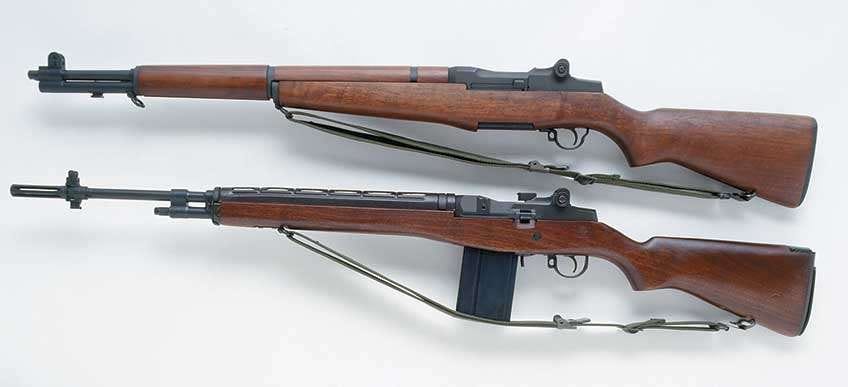



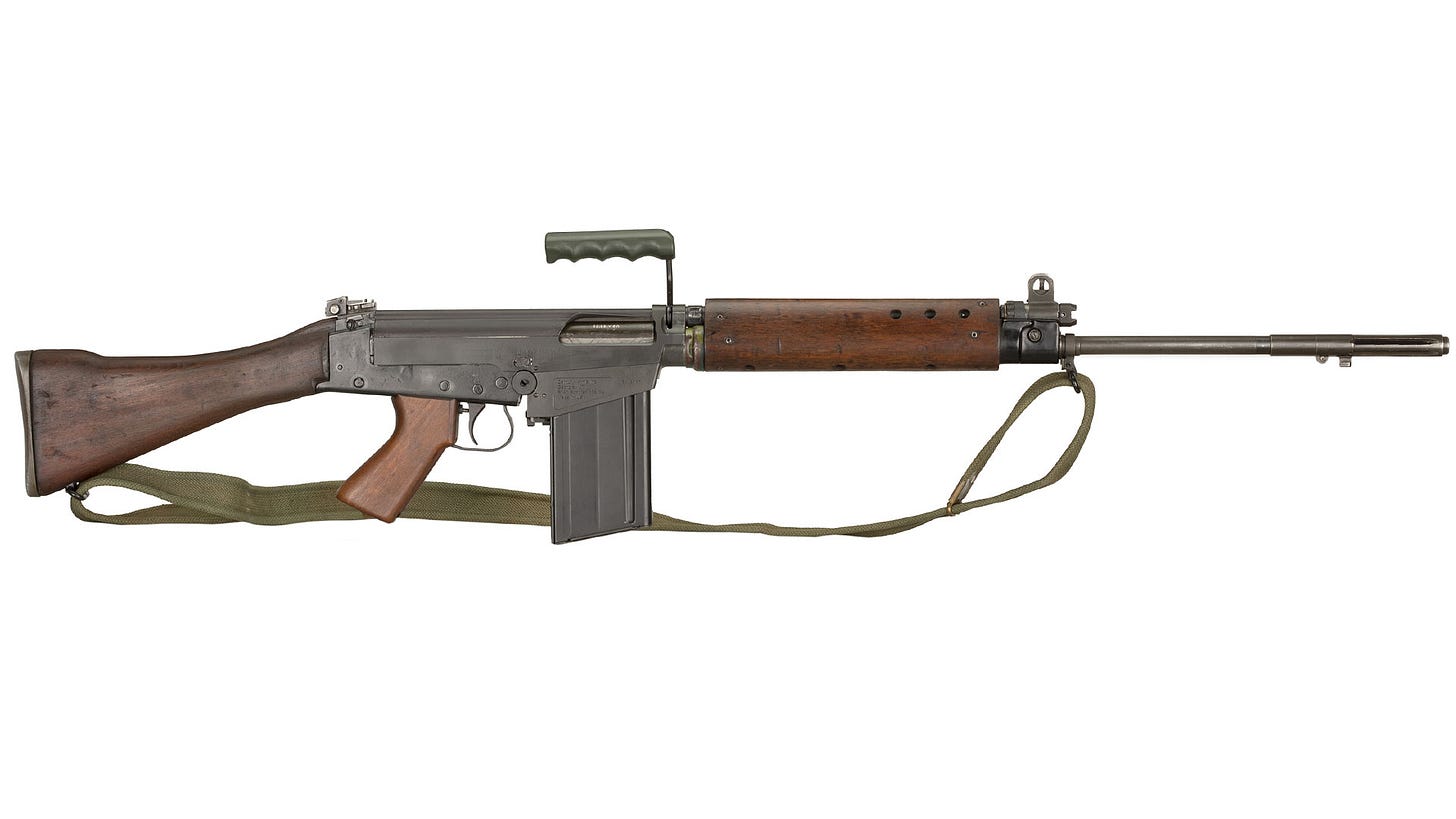
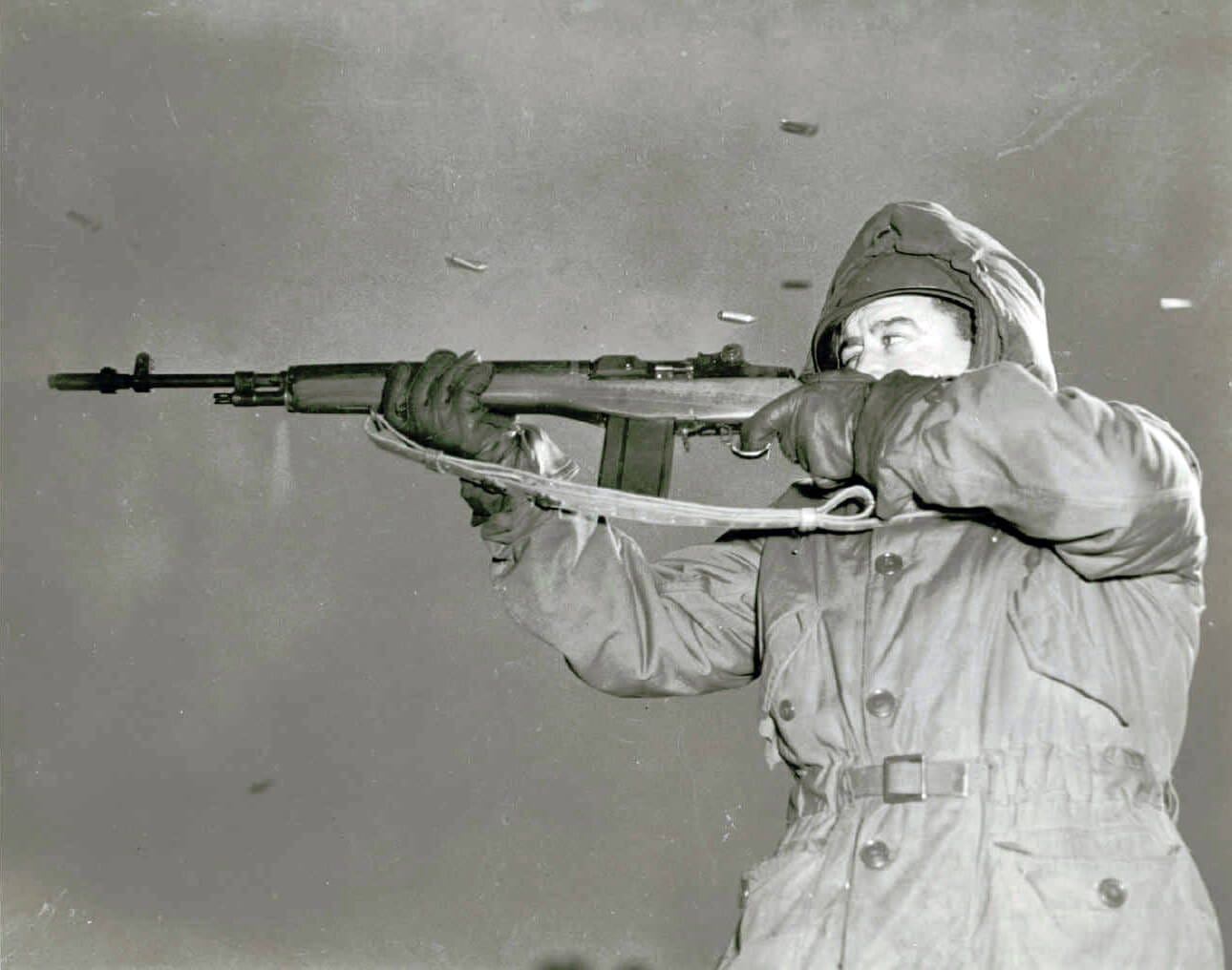
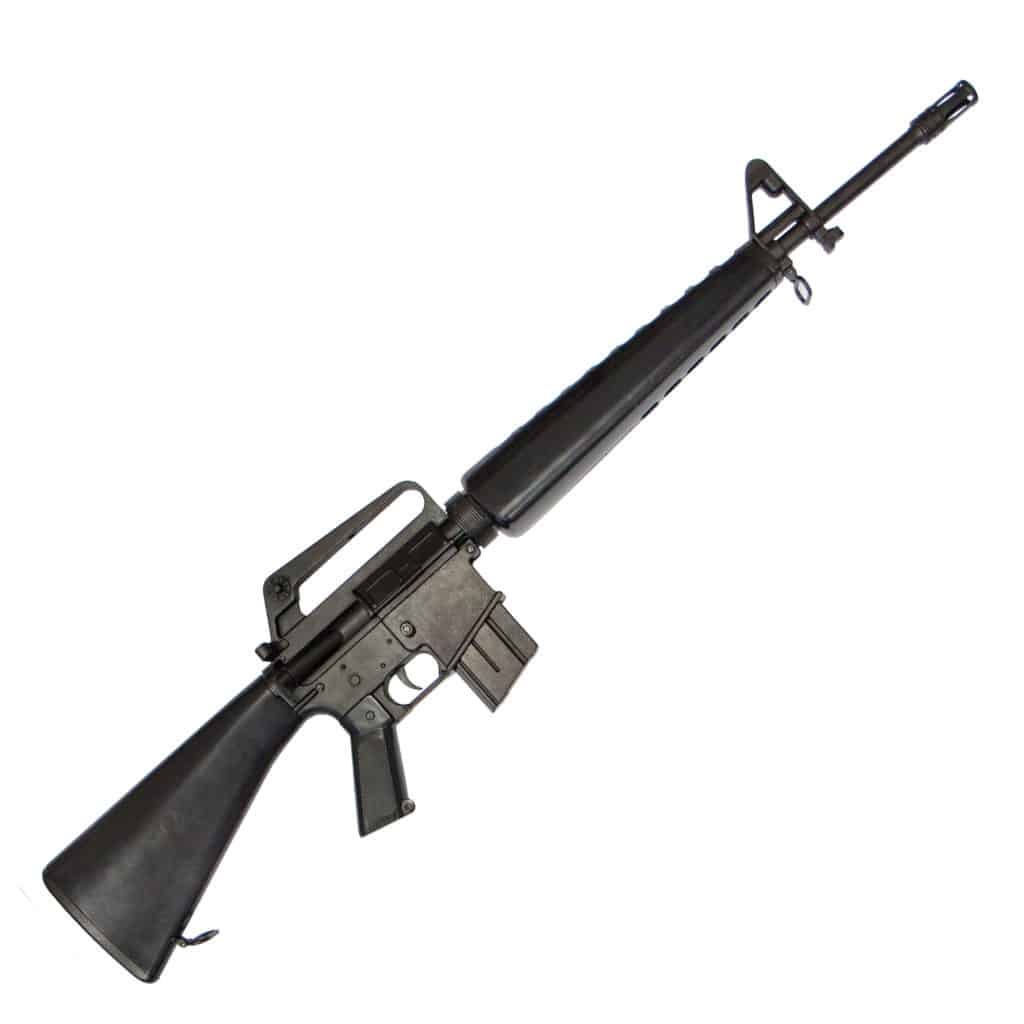
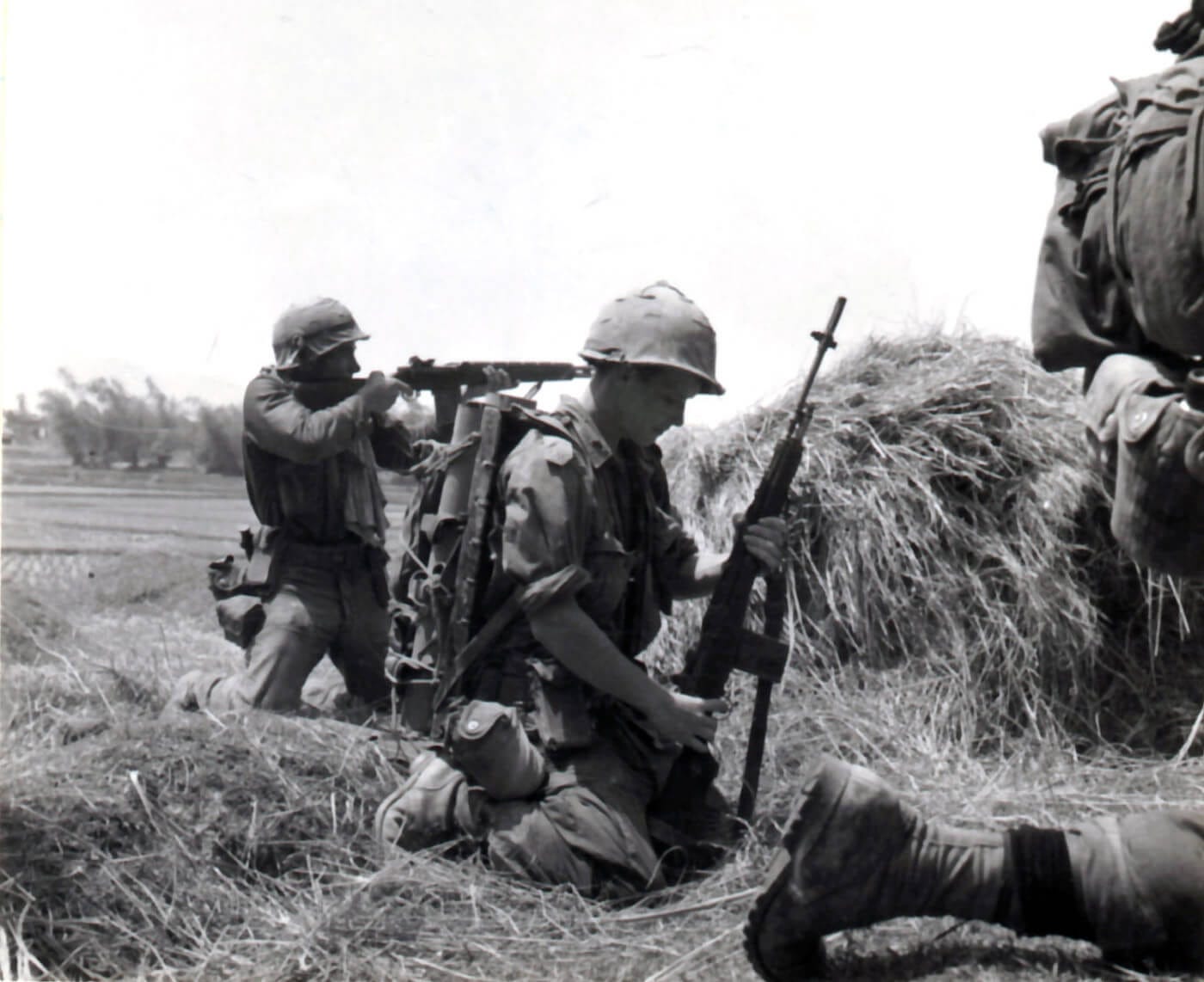
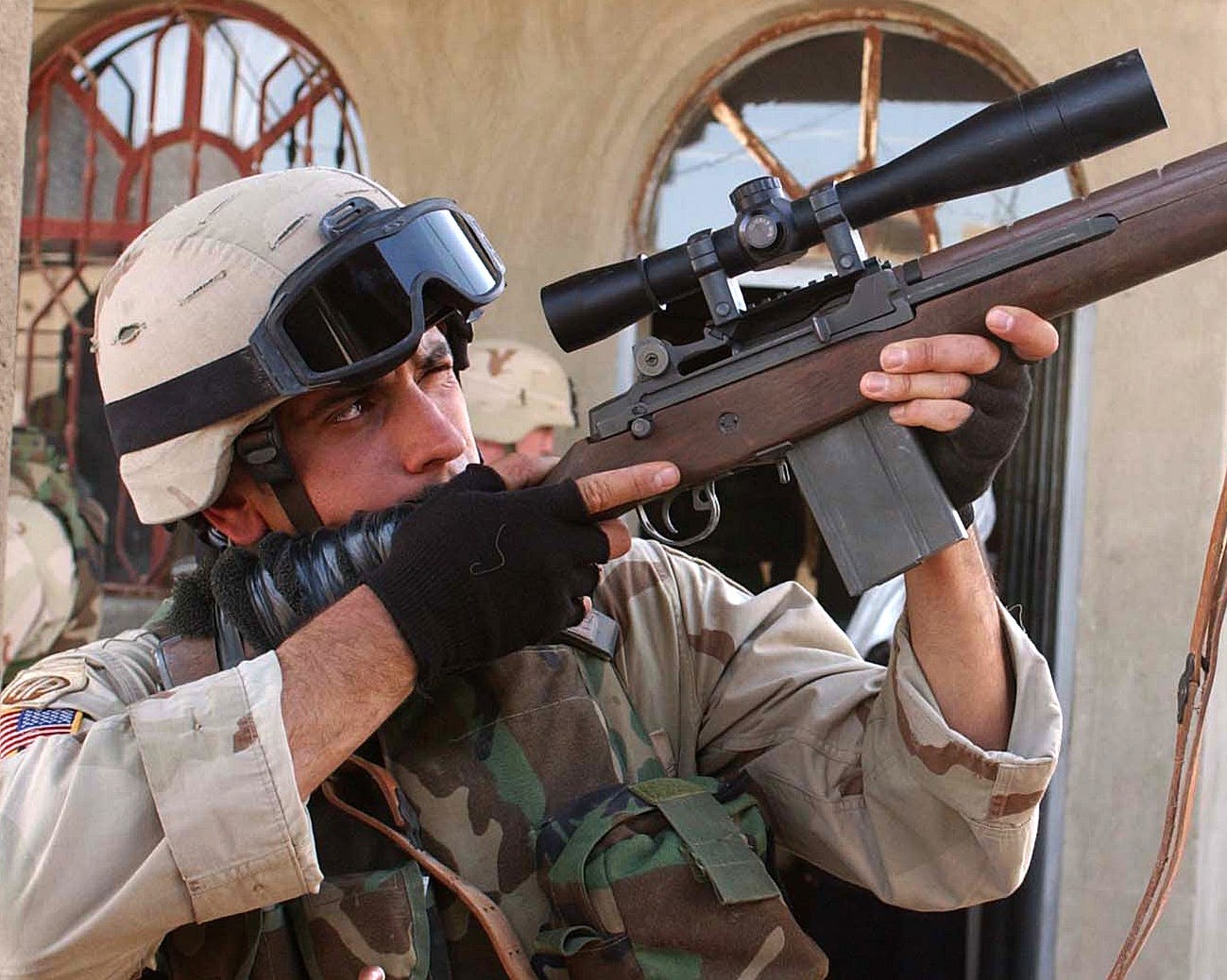
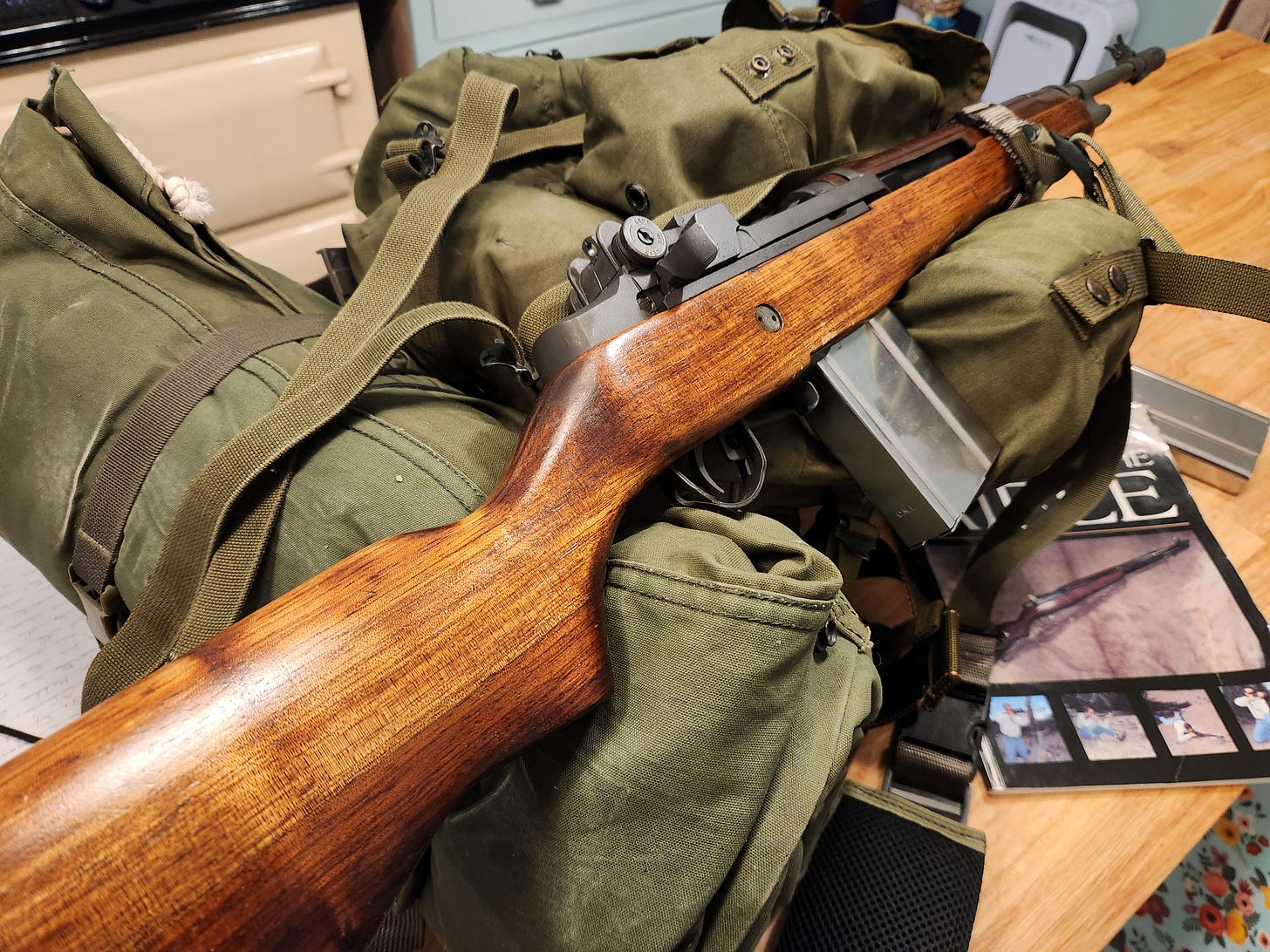
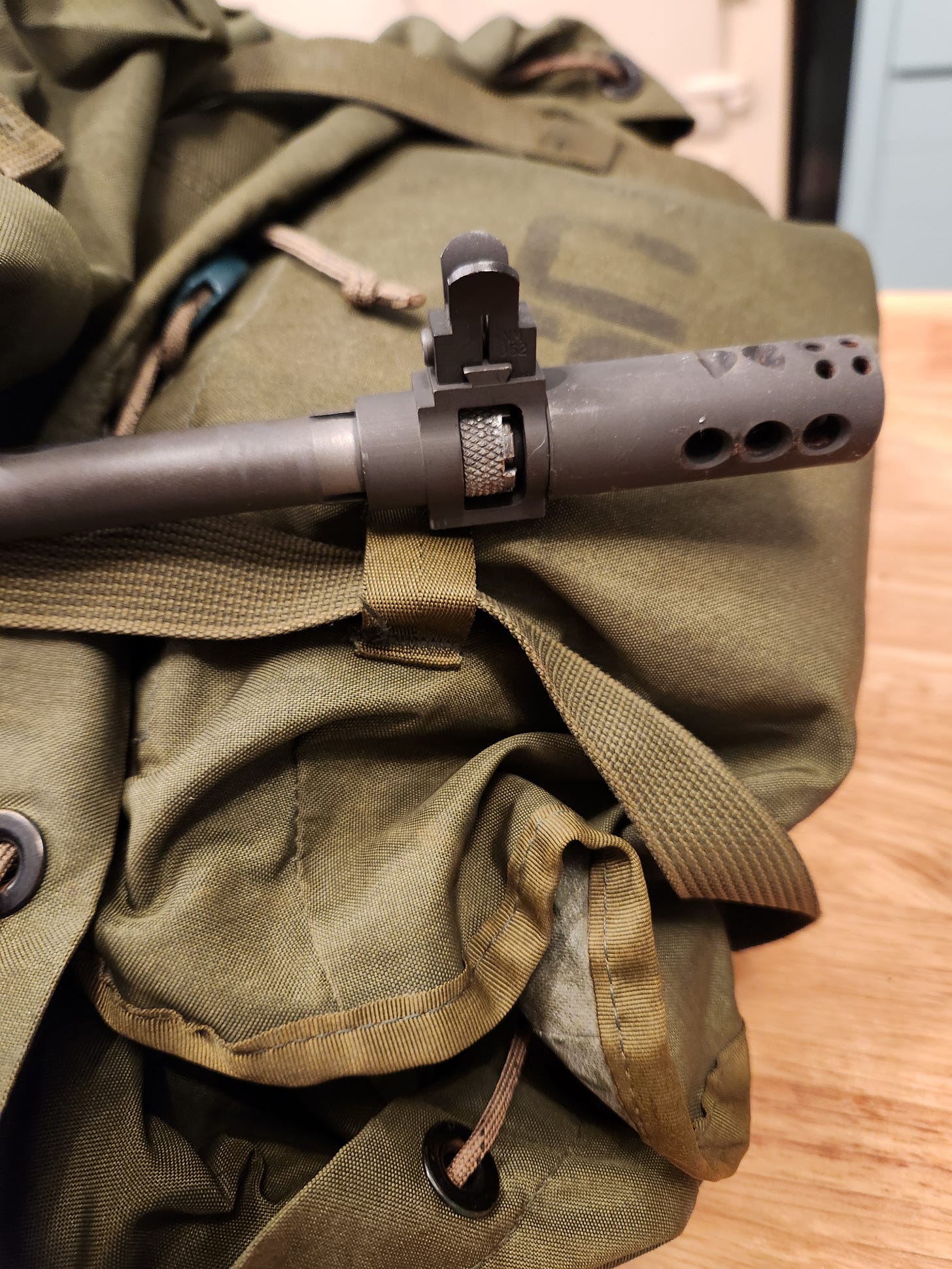
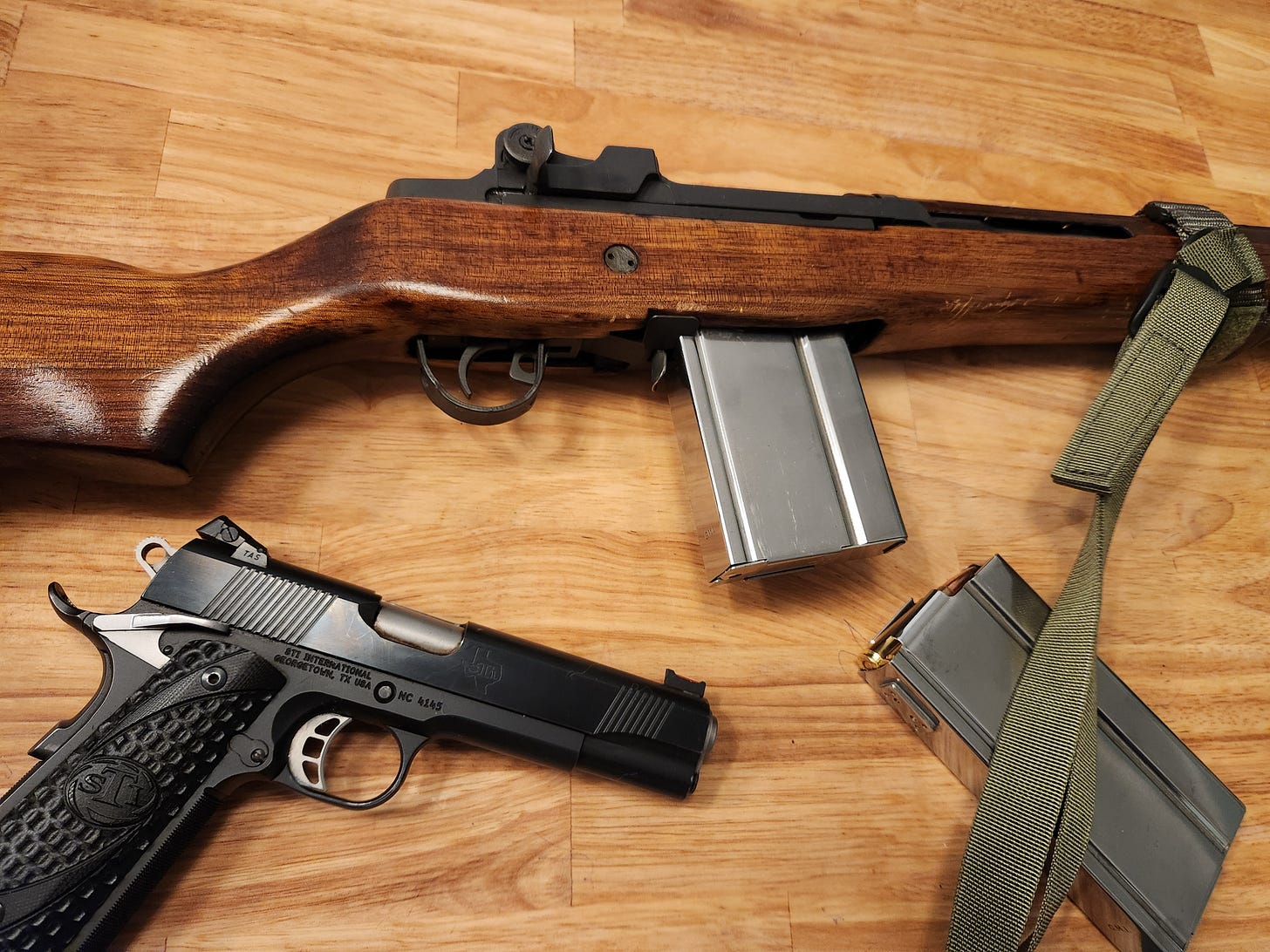
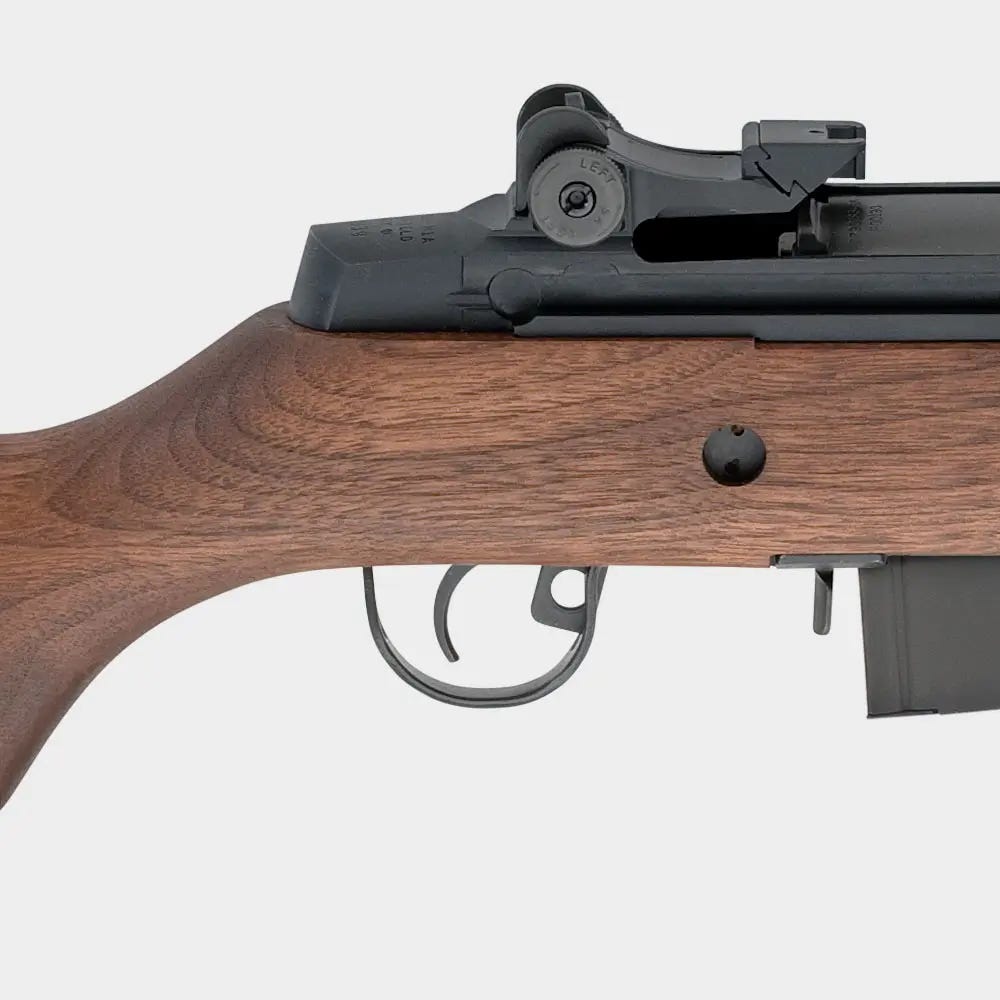
I was able to fire an M1A at an impromptu/unauthorized Springfield Factory Demo Day at my then-favorite LGS (I've since moved away a few years ago). To clarify, it was impromptu/unauthorized because it was Launch Day for the Echilon, but Springfield only sent them a demo gun. No factory rep, no other SA firearms to try. So management pulled all of their SA rentals down off the wall and hosted a "Springfield Demonstration Event."
Anywho, one of their rentals was an M1A. Full-size, wooden stock, don't know if it was a Standard, Loaded, or National Match model. I'd been hankering for a full-size battle rifle for a while, so I asked to try it. Was able to put 5 rounds through it. That was enough for me to figure out why it didn't last very long in US service.
It's big. It's heavy. It's awkwardly balanced when fired from the shoulder. The safety is non-intuitive and arguably dangerous. And it kicks like a moose.
And you know what? I don't care! I want one so freaking bad!
But not a Springfield. I've had poor experiences with their QC in the past, so I'm saving up for a Fulton Armory or an LRB, and I'm going to do it up as an homage to Randy Shughart's rifle. Scope mount with an Aimpoint 9000, paint the stock in desert camo, put some sort of shooting sling on it.
The m14/ m1a sits in the gun world like Harleys in the auto world. Stuck with a foot in the past and alluring often the same type of buyers looking for nostalgia and literal volume.
For the record I think they are cool guns and immortalized by SFC Randy Shughart. A reason I still want the arguably less accurate, heavier, and un-upgradable rifle.